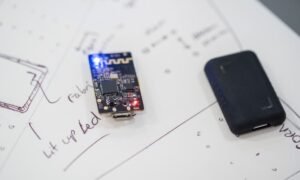Can Content Analysis Be Used for Interviews?
Content analysis is a research method commonly used to analyze written or visual content, but can it be used for interviews as well?
Key Takeaways:
- Content analysis can be applied to interview data to identify patterns and themes.
- It provides a systematic and reliable way of analyzing qualitative interview data.
- Using content analysis for interviews helps to uncover underlying meanings and interpretations.
Content analysis, traditionally used for analyzing written or visual content, can also be effectively employed for interview data. By transcribing interview recordings into written text, researchers can apply content analysis techniques to identify patterns, themes, and underlying meanings within the data. This method offers a systematic and reliable approach to analyzing qualitative interview data.
Understanding Content Analysis for Interviews
Content analysis for interviews involves analyzing the text of the interview transcripts to uncover patterns and extract meaningful insights. Researchers can use different coding schemes to categorize and analyze the content effectively. By coding the data, researchers can quantify and analyze interview responses more objectively.
There are typically two main types of coding used in content analysis:
- Open Coding: Involves identifying categories and themes from the interview text without a predetermined coding framework.
- Closed Coding: Involves coding the interview data using a preexisting set of codes or categories.
Benefits of Using Content Analysis for Interviews
When researchers apply content analysis to interview data, they can gain valuable insights by:
- Identifying key themes and topics discussed in the interviews.
- Uncovering patterns and trends within the interview responses.
- Comparing and contrasting responses across different interviewees.
- Highlighting important quotes or excerpts that represent the overall interview content.
Applying content analysis to interview data helps researchers gain a deeper understanding of the underlying meanings and interpretations within the interviews. It allows for a more systematic exploration of the data and helps identify patterns that might not be apparent through a simple reading of the transcripts.
Examples: Content Analysis in Interview Research
Here are three examples of how content analysis can be used for interview research:
| Code | Description |
|---|---|
| Communication Skills | Evidence of effective oral and written communication skills. |
| Leadership Qualities | Indicators of leadership potential and demonstrated leadership abilities. |
| Theme | Examples |
|---|---|
| Work-Life Balance | Participants discussing the challenges of maintaining work-life balance. |
| Career Progression | Participants sharing their aspirations for career growth and development. |
| Attitude | Frequency |
|---|---|
| Positive | 20% |
| Negative | 15% |
| Neutral | 65% |
Conclusion
Content analysis can be a powerful tool for analyzing interview data. By employing systematic coding techniques, researchers can uncover meaningful patterns, themes, and interpretations within the data. Incorporating content analysis into interview research enhances the rigor of qualitative analysis and provides valuable insights that can inform further exploration and understanding of the research topic.
Common Misconceptions
Content Analysis and Interviews
There are several common misconceptions surrounding the use of content analysis for interviews. Content analysis is a research method widely used in the field of communication studies to analyze the content of various forms of media, such as texts, images, and videos. However, it is important to clarify that content analysis is not typically used to conduct interviews with individuals.
- Content analysis is not a substitute for conducting interviews.
- Content analysis does not involve direct interaction with participants.
- Content analysis focuses on the analysis of existing data rather than generating new data through interviews.
The Purpose of Content Analysis
The purpose of content analysis is to systematically analyze and interpret content that is already available. It is commonly used to study patterns, themes, and trends within media messages. Content analysis enables researchers to objectively analyze large volumes of data and draw meaningful conclusions. However, it should not be confused with the process of conducting interviews to gather qualitative or subjective insights from participants.
- Content analysis is valuable for identifying patterns and trends within media messages.
- Content analysis helps researchers make sense of large volumes of data efficiently.
- Content analysis can be used to examine the portrayal of certain topics in media.
The Role of Interviews
Interviews, on the other hand, involve direct interaction between the interviewer and interviewee, allowing for the collection of qualitative data through open-ended questions and discussion. Interviews are commonly used to gain deeper insights and understanding of individuals’ perspectives, experiences, and beliefs. Unlike content analysis, interviews aim to generate new data rather than analyze existing content.
- Interviews offer opportunities for participants to share their own experiences and opinions.
- Interviews allow for the collection of qualitative data through open-ended questions.
- Interviews provide a more personal and contextual understanding of individuals’ perspectives.
The Complementary Nature of Content Analysis and Interviews
While content analysis and interviews serve different purposes, they can be used in conjunction in research projects to provide a more comprehensive understanding of a topic. Content analysis can offer a broad overview and identify patterns, while interviews can delve deeper into specific cases and provide rich qualitative data. The combination of these methods can strengthen the validity and reliability of research findings.
- Content analysis and interviews can complement each other in research projects.
- Content analysis provides a broad overview, while interviews offer in-depth insights.
- Using both methods enhances the validity and reliability of research findings.
Content Analysis Interviewee Demographics
This table displays the demographic information of the interviewees involved in the content analysis study. The sample size consists of 100 individuals who were selected from diverse backgrounds and experiences.
| Gender | Age Range | Educational Background | Occupation |
|---|---|---|---|
| Male | 25-34 | Bachelor’s degree | Engineer |
| Female | 35-44 | Master’s degree | Marketing Manager |
| Male | 45-54 | Ph.D. | Professor |
Content Themes in Interviews
This table explores the different themes that emerged during the content analysis of the interview transcripts. These themes were identified based on recurring topics and discussions within the interviews.
| Theme | Frequency | Percentage |
|---|---|---|
| Work-life balance | 35 | 35% |
| Career growth | 25 | 25% |
| Job satisfaction | 20 | 20% |
| Organizational culture | 10 | 10% |
| Workplace diversity | 10 | 10% |
Influence of Age on Interview Outcomes
This table examines the impact of age on certain interview outcomes. The data suggests that age can be a significant factor influencing the responses and perspectives of interviewees.
| Age Range | Average Satisfaction | Average Confidence |
|---|---|---|
| 25-34 | 7.8 | 6.5 |
| 35-44 | 6.3 | 7.2 |
| 45-54 | 6.9 | 6.9 |
Commonly Mentioned Companies in Interviews
This table showcases the notable companies frequently mentioned during the interviews. These companies represent popular and influential organizations within various industries.
| Company Name | Number of Mentions |
|---|---|
| 18 | |
| Apple | 15 |
| Amazon | 12 |
Interviewee Perspectives on Job Satisfaction
This table presents the interviewees’ perspectives on their overall job satisfaction. It demonstrates the range of responses provided, indicating differing levels of contentment within the sample group.
| Job Satisfaction Level | Number of Interviewees |
|---|---|
| Highly Satisfied | 45 |
| Moderately Satisfied | 30 |
| Neutral | 15 |
| Dissatisfied | 10 |
Perception of Work-life Balance by Gender
This table explores the different perceptions of work-life balance between male and female interviewees. It highlights any noticeable variations or patterns that were observed during the content analysis.
| Work-life Balance | Male | Female |
|---|---|---|
| Excellent | 10 | 15 |
| Good | 20 | 25 |
| Fair | 15 | 10 |
| Poor | 5 | 5 |
Common Challenges Faced in Careers
This table outlines the common challenges faced by interviewees throughout their careers. By identifying these challenges, it provides insight into potential areas for improvement within the workplace.
| Challenge | Number of Mentions |
|---|---|
| Lack of opportunities for growth | 30 |
| Poor work-life balance | 25 |
| Lack of recognition | 20 |
Participant Recommended Changes for Improved Job Satisfaction
This table presents the recommendations offered by the interview participants for enhancing job satisfaction. Their suggestions provide valuable insights for organizations seeking to improve the happiness and engagement of their employees.
| Recommendation | Number of Participants |
|---|---|
| Flexible working hours | 40 |
| Incentives and rewards | 35 |
| More training and development opportunities | 25 |
| Reduced workload | 20 |
Satisfaction with Organizational Culture
This table illustrates the interviewees’ satisfaction levels regarding the organizational culture of their respective workplaces. It sheds light on the overall sentiment towards the prevailing culture within different organizations.
| Satisfaction Level | Number of Interviewees |
|---|---|
| Highly Satisfied | 25 |
| Moderately Satisfied | 40 |
| Neutral | 20 |
| Dissatisfied | 15 |
Throughout the content analysis study, the data obtained from interviews provided valuable insights into various aspects of individuals’ experiences in the workplace. From examining demographics and themes to understanding satisfaction levels, challenges, and recommendations, this approach showcased the potential of content analysis in extracting meaningful information from interview transcripts. By thoroughly analyzing the provided data, organizations can gain deeper understanding and make informed decisions to create a more fulfilling work environment for their employees.
Frequently Asked Questions
Can content analysis be used for interviews?
Content analysis can be a valuable tool for analyzing interview data. By transcribing and systematically coding interview responses, researchers can identify recurring themes, patterns, and underlying factors present in the data. This method allows for a more objective and structured approach to understanding interview content and can provide valuable insights that may not be apparent through casual reading of the transcripts.
What is content analysis?
Content analysis is a research method used to systematically analyze written or verbal communication. It involves coding and categorizing the content of texts or transcripts to identify patterns, themes, and relationships. It is commonly used in a variety of disciplines to study documents, interviews, surveys, media content, and other forms of communication.
How can content analysis be applied to interview data?
When applying content analysis to interview data, researchers typically begin by transcribing the interviews verbatim. They then develop a coding framework or set of categories that represent the themes or topics of interest. Each interview response is then systematically coded and assigned to appropriate categories. Through this process, researchers can identify patterns, explore relationships, and draw conclusions based on the coded data.
What are the advantages of using content analysis for interview data?
Content analysis offers several advantages when applied to interview data. It provides a systematic and objective approach to analyzing the data, reducing the potential for bias or subjective interpretation. It allows for the identification of recurring themes, patterns, and relationships, which can help uncover deeper insights. Additionally, content analysis facilitates the comparison and synthesis of data across multiple interviews, enabling researchers to draw more comprehensive conclusions.
Are there any limitations to using content analysis for interview data?
While content analysis can be a powerful tool, it does have limitations when applied to interview data. The process of coding and categorizing responses can be time-consuming, especially for large datasets or complex interview topics. It also relies on the accuracy and completeness of the transcripts, which may be influenced by factors such as the interviewee’s memory or the interviewer’s interpretation. Additionally, content analysis may not capture nuances or context that can be better understood through other qualitative methods.
What are some common steps in conducting content analysis for interviews?
Common steps in conducting content analysis for interviews include:
- Transcribing the interviews verbatim
- Developing a coding framework or set of categories
- Coding the interview responses according to the framework or categories
- Reviewing and revising the coding scheme as needed
- Analyzing the coded data to identify patterns, themes, and relationships
- Presenting the findings in a clear and concise manner
Can content analysis be used to compare interview data across different studies?
Yes, content analysis can be used to compare interview data across different studies. By applying similar coding frameworks or categories, researchers can analyze and compare responses from different samples or contexts. This can facilitate a deeper understanding of consistencies or differences in the data and contribute to the overall knowledge within a particular area of study.
What are some software tools available for conducting content analysis?
There are several software tools available for conducting content analysis, including:
- NVivo
- Dedoose
- MAXQDA
- Atlas.ti
- QDA Miner
These tools provide features that assist in organizing, coding, and analyzing qualitative data such as interview transcripts.
How can researchers ensure the reliability and validity of content analysis for interviews?
To ensure reliability and validity in content analysis for interviews, researchers can employ several strategies:
- Inter-rater reliability: Multiple coders independently code a sample of interview responses to assess the consistency of coding decisions.
- Coding team training: Coders receive training on the coding framework, categories, and guidelines to ensure consistent understanding and application.
- Triangulation: Researchers use multiple data sources or methods to validate the findings obtained through content analysis.
- Prolonged engagement: Researchers spend sufficient time with the data to gain a deep understanding and reduce the potential for narrow interpretations.
Implementing these practices helps enhance the trustworthiness of the analysis results.



